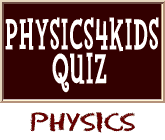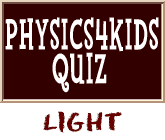Particles and Waves
During the early 1900's scientists proved that electromagnetic radiation not only has packs of energy (quanta), but also proved that light moves in a wave pattern. It's like a stream of individual packets.Looking at the Waves
All types of light move in wave-like patterns. In each wave pattern are high points and low points. The distance between two high points, or low points, is called the wavelength. Scientists use the Greek letter lambda to describe that distance. Depending on what type of light you are talking about, each type has a different lambda, or wavelength. All of the wavelengths of light together are called the EM spectrum.Looking at the Particles
Light not only moves in waves; it also moves with a flow of little particles. Scientists call these particles of light, photons. The packets contain the energy that makes up the energy of the light. Scientists measure something called the relative energy of different types of light. The energy increases as the wavelength decreases.Looking at the Energy
Compare different types of light. You will see that as you move up the EM spectrum and the wavelengths get smaller, those types of light have more energy. The big idea to remember is that light consists of both waves, and energy (transmitted with particles). EM radiation, like gamma waves and cosmic waves, has huge amounts of energy compared to a radio wave. When you look at the visible part of the spectrum, you will see that violet light is more energetic than light from the red part of the spectrum.
Or search the sites for a specific topic.
Light Photons, Rays, and Waves (NASA SciFiles Video)

Useful Reference Materials
Encyclopedia.com (Light):http://www.encyclopedia.com/topic/light.aspx
Wikipedia (Wave-Particle Duality):
http://en.wikipedia.org/wiki/Wave%E2%80%93particle_duality
Encyclopædia Britannica (Wave and Field Concept):
http://www.britannica.com/EBchecked/topic/183228/electromagnetic-radiation/11357/The-electromagnetic-wave-and-field-concept






